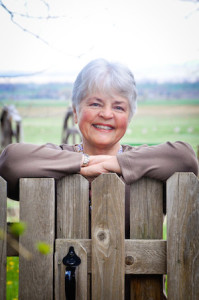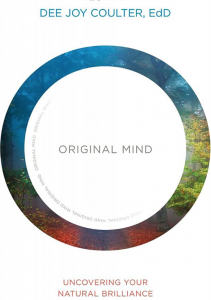I am speaking with Dee Joy Coulter, who has just published a fascinating book entitled Original Mind:Uncovering Your Natural Brilliance. I have found this book to be very useful in my own parenting, with brain‐based support for the principles of simplicity as the means for healthy brain growth and learning. I hope you will be enriched by Dee’s insights shared here. We have made her book available at the Simplicity Parenting bookstore as well.
 SP: Dee, you have said that simplicity is an important key for preparing children for success as learners. How early should our efforts to support learning begin?
SP: Dee, you have said that simplicity is an important key for preparing children for success as learners. How early should our efforts to support learning begin?
Dee: It’s hard to imagine that preparing your child to be a learner when they go to school begins at birth, but it actually does. Essentially, children are born without “switches”, and many first‐time parents wonder where is the “off”switch is
so they can calm. They wonder how can they turn off the sensory world so their child is not overwhelmed. The answer is that there is no switch ‐-‐ we have to actually coach children into being able to calm themselves. We do that by really simplifying their environment and being really predictable and calm and coaching them as to what comforts them so they can begin to do self -comforting. Some children learn that easily and some seem to be what we might call a “fussy baby.” They may have been born with a little more stress in their nervous system so they need even more patient and skillful parenting.
In general, it’s all about simplicity. It’s all about quieting the environment and paying attention to the stimulation in their environment so we don’t overdo it. Pretty soon, they will want to take in the world and be dazzled by the wonder of where they are -‐ so it is important that they know how to calm. Otherwise, they will be overwhelmed so easily that we might then say they have attention deficit problems or be over stimulated. However, that really tells us that they simply haven’t learned the art of calming yet.
So the very first thing we want to do is to teach children how to turn off the sensory world so that when the sensory world is turned on they are doing it by choice and they can protect themselves from overload when we forget to do it for them. Then, life becomes workable and not overwhelming. That lays the groundwork for learning, for taking in new information without getting overly excited by it. It is absolutely the first gift that we can give them as we prepare them to be
learners. It allows them to take in the world without being overwhelmed.
SP: What if we don’t accomplish this in the first three months? Can self‐calming be taught after that critical window has passed?
Dee: That’s just the natural window if all systems are “go”. We work on learning to  calm all our lives and we can always coach for this. It may never become automatic for some children, but they can always learn the tools to manage their stimulation levels. Some of us never did master this as children so we have our calming strategies on manual control. There is even a computer app in the workplace where the screen interrupts one’s work to say ‘remember to breathe’. So we work on calming techniques all our lives.
calm all our lives and we can always coach for this. It may never become automatic for some children, but they can always learn the tools to manage their stimulation levels. Some of us never did master this as children so we have our calming strategies on manual control. There is even a computer app in the workplace where the screen interrupts one’s work to say ‘remember to breathe’. So we work on calming techniques all our lives.
 calm all our lives and we can always coach for this. It may never become automatic for some children, but they can always learn the tools to manage their stimulation levels. Some of us never did master this as children so we have our calming strategies on manual control. There is even a computer app in the workplace where the screen interrupts one’s work to say ‘remember to breathe’. So we work on calming techniques all our lives.
calm all our lives and we can always coach for this. It may never become automatic for some children, but they can always learn the tools to manage their stimulation levels. Some of us never did master this as children so we have our calming strategies on manual control. There is even a computer app in the workplace where the screen interrupts one’s work to say ‘remember to breathe’. So we work on calming techniques all our lives.
SP: How do we reduce the activity level so it is workable and allows children to calm back down when they get a little older?
Dee: Then we work on scheduling “down time” so they can learn things to self‐calm in their own lives. They can learn how and when to take a break and discover things they could do to take a breather in their day. They could take a nap, have a snack, sit in nature, pet the dog and so on. They need these breaks more than we would if our day was like theirs.
If we were to travel in a foreign country, we would be exhausted at the end of the day from taking in so much novelty, and we would need to rest. We have to remember that our children are essentially in a foreign country. While everything in their daily life is very familiar to us, much of it is quite new and fresh to them ‐so they need these calming tools.
Click below to download the entire article, in which Dee discusses the development of inner speech, healthy approaches to reading and academics, and simplicity’s gifts for older learners.